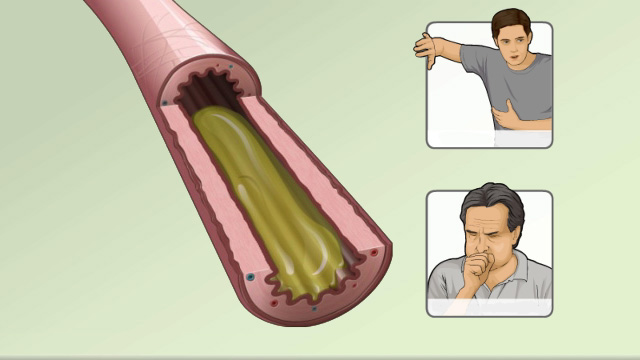Stay away from asthma triggers
Asthma triggers - stay away from; Asthma triggers - avoiding; Reactive airway disease - triggers; Bronchial asthma - triggers
It is important to know what things make your asthma worse. These are called asthma "triggers." Avoiding them is your first step toward feeling better.

Our homes can have asthma triggers, such as:
- The air we breathe
- Furniture and carpets
- Our pets

Stay Away From Smoking
If you smoke, ask your health care provider for help quitting. No one should smoke in your house. This includes you, others with whom you live, and your visitors.
Smokers should smoke outside and wear a coat. The coat will keep smoke particles from sticking to their clothes. They should leave the coat outside or away from you and your child.
Ask people who work at your child's day care, preschool, school, and anyone else who takes care of your child, if they smoke. If they do, make sure they do not smoke near your child.
Stay away from restaurants and bars that allow smoking. Or, ask for a table as far away from smokers as possible.
Pollen
When pollen levels are high:
- Stay indoors and keep doors and windows closed. Use an air conditioner if you have one.
- Do outside activities in the late afternoon or after a heavy rain.
- Wear a facemask while you are doing outdoor activities.
- Do not dry clothes outdoors. Pollen will stick to them.
- Have someone who does not have asthma cut the grass, or wear a facemask if you must do it.
Dust Mites
You can take several steps to limit exposure to dust mites.
- Wrap mattresses, box springs, and pillows in mite-proof covers.
- Wash bedding and pillows once a week in hot water (130°F to 140°F [54°C to 60°C]).
- If you can, get rid of upholstered furniture. Use wooden, leather, or vinyl furniture instead.
- Keep indoor air dry. Try to keep the humidity level lower than 50%.
- Wipe away dust with a damp cloth and vacuum once a week. Use a vacuum cleaner with a HEPA (high-efficiency particulate arrestor) filter.
- Replace wall-to-wall carpet with wood or other hard flooring.
- Keep stuffed toys off the beds, and wash them weekly.
- Replace slatted blinds and cloth draperies with pull-down shades. They will not collect as much dust.
- Keep closets clean and closet doors closed.
Mold Spores
Keeping indoor humidity at less than 50% will keep mold spores down. To do so:
- Keep sinks and tubs dry and clean.
- Fix leaky pipes.
- Empty and wash refrigerator trays that collect water from the freezer.
- Defrost your refrigerator often.
- Use an exhaust fan in the bathroom when you are showering.
- Do not let damp clothes sit in a basket or hamper.
- Clean or replace shower curtains when you see mold on them.
- Check your basement for moisture and mold.
- Use a dehumidifier to keep the air dry.
Pets can Make Asthma Worse
Keep pets with fur or feathers outside, if possible. If pets stay inside, keep them out of bedrooms and off upholstered furniture and carpets.
Wash pets once a week if possible.
If you have a central air conditioning system, use a HEPA filter to remove pet allergens from indoor air. Use a vacuum cleaner with HEPA filters.
Wash your hands and change your clothes after playing with your pet.
Roaches and Rodents
Keep kitchen counters clean and free of food crumbs. Do not leave dirty dishes in the sink. Keep food in closed containers.
Do not let trash pile up inside. This includes bags, newspapers, and cardboard boxes.
Use roach traps. Wear a dust mask and gloves if you touch or are near rodents.
Other Triggers to Watch Out for
Do not use wood-burning fireplaces. If you need to burn wood, use an airtight wood-burning stove.
Do not use perfumes or scented cleaning sprays. Use trigger sprays instead of aerosols.
Discuss any other possible triggers with your provider and how to avoid them.
References
Custovic A, Tovey E. Allergen control for prevention and management of allergic diseases. In: Burks AW, Holgate ST, O'Hehir RE, et al, eds. Middleton's Allergy: Principles and Practice. 9th ed. Philadelphia, PA: Elsevier; 2020:chap 84.
National Heart, Lung and Blood Institute. Asthma Management Guidelines: Focused Updates 2020. www.nhlbi.nih.gov/health-topics/asthma-management-guidelines-2020-updates. Updated February 4, 2021. Accessed February 12, 2024.
Rank MA, Schatz M. Asthma in adolescents and adults. In: Kellerman RD, Rakel DP, Heidelbaugh JJ, Lee EM, eds. Conn's Current Therapy 2024. Philadelphia, PA: Elsevier; 2024:897-905.
Vishwanathan RK, Busse WW. Management of asthma in adolescents and adults. In: Burks AW, Holgate ST, O'Hehir RE, et al, eds. Middleton's Allergy: Principles and Practice. 9th ed. Philadelphia, PA: Elsevier; 2020:chap 52.
Review Date: 2/3/2024








